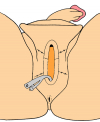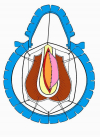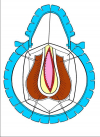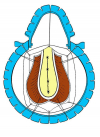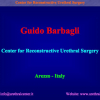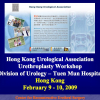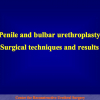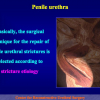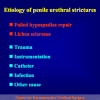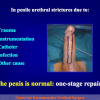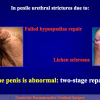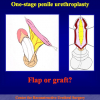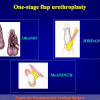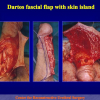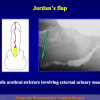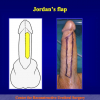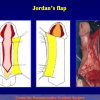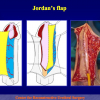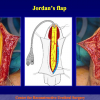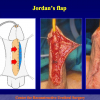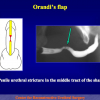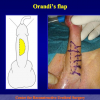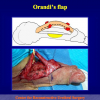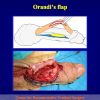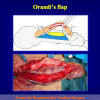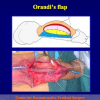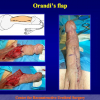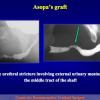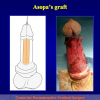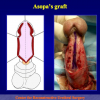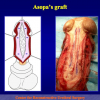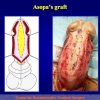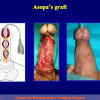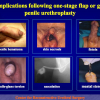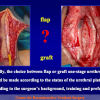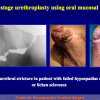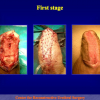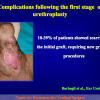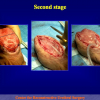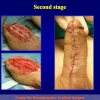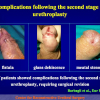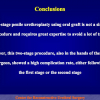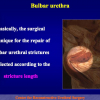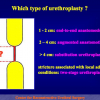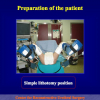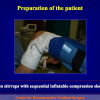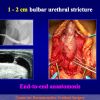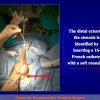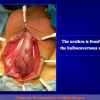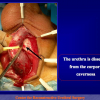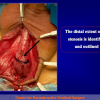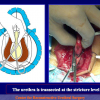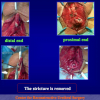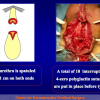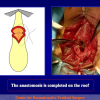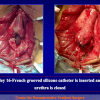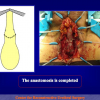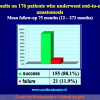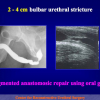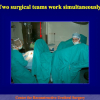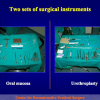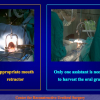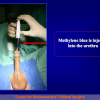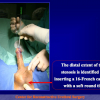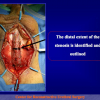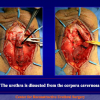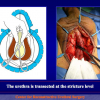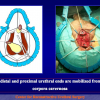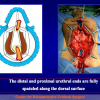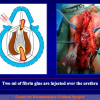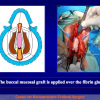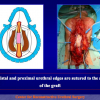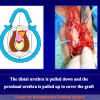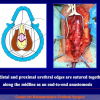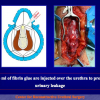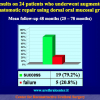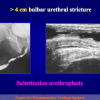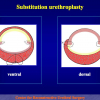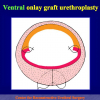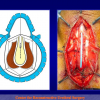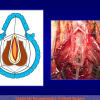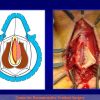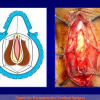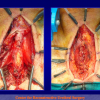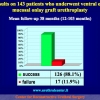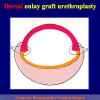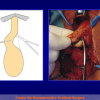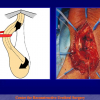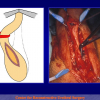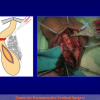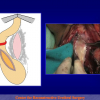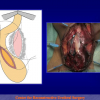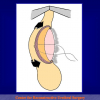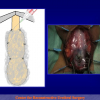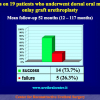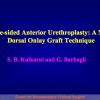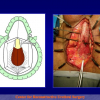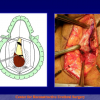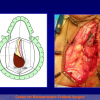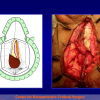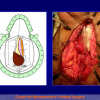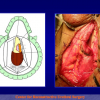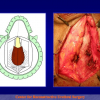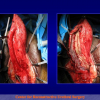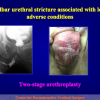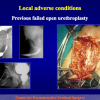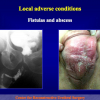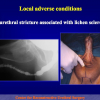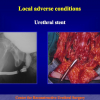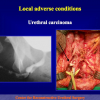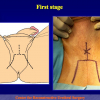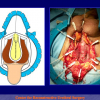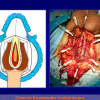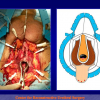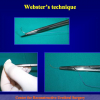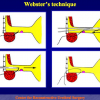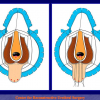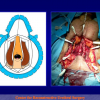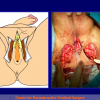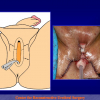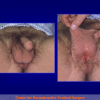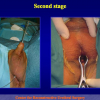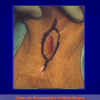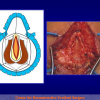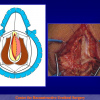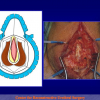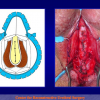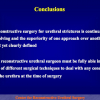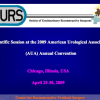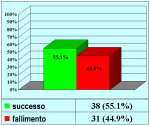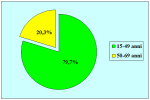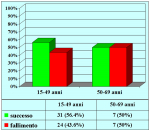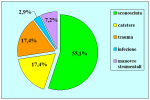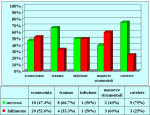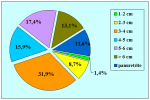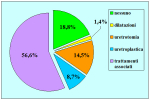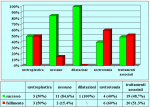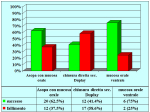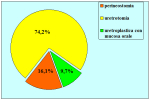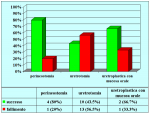L’intervento denominato “uretroplastica in due tempi” consiste nel ricostruire il canale uretrale con due interventi chirurgici che vengono effettuati a distanza di tempo uno dall’altro.
|
Figura 1 |
Figura 2 |
Figura 3 |
Figura 4 |
Con il primo intervento, l’uretra viene aperta ed il paziente presenta una perineostomia (figura 1).
Con il secondo intervento chirurgico, la stomia perineale viene chiusa (figura 2-3-4) e la minzione viene ripristinata attraverso il meato uretrale esterno.
L’intervento chirurgico denominato “uretroplastica in due tempi” è indicato fondamentalmente nei pazienti con stenosi complesse dell’uretra bulbare.
Lettura n° 1:
| Uretroplastia en dos tiempos ¿cómo y cuándo ? 51 Curso de Urologia Fundació Puigevert 18 – 20 de octubre 2006 Barcelona – Spain |
 scarica PDF |
|
|
|
||
| Lettura n° 2: | ||
| Penile and bulbar urethroplasty Surgical techniques and results Hong Kong Urological Association Urethroplasty Workshop Division of Urology – Tuen Mun Hospital Hong Kong February 9 – 10, 2009 |
 scarica PDF |
Articolo n° 1
Barbagli G, Palminteri E, Bartoletti R, Selli C, Rizzo M.
Long-term results of anterior and posterior urethroplasty with actuarial evaluation of the success rates.
J Urol. 1997 Oct;158(4):1380-2.
Articolo n° 2
Barbagli G, Palminteri E, Lazzeri M, Guazzoni G, Turini D.
Long-term outcome of urethroplasty after failed urethrotomy versus primary repair.
J Urol. 2001 Jun;165(6 Pt 1):1918-9
Articolo n° 3
Palminteri E, Lazzeri M, Guazzoni G, Turini D, Barbagli G.
New 2-stage buccal mucosal graft urethroplasty.
J Urol. 2002 Jan;167(1):130-2
Articolo n° 4
Barbagli G., Guazzoni G., Lazzeri M.
One-Stage bulbar urethroplasty: Retrospective analisys of the results in 375 patients
Eur Urol 2008; 53:828 – 33
Barbagli G, Palminteri E, Bartoletti R, Selli C, Rizzo M.
Long-term results of anterior and posterior urethroplasty with actuarial evaluation of the success rates.
J Urol. 1997 Oct;158(4):1380-2.
Articolo n° 2
Barbagli G, Palminteri E, Lazzeri M, Guazzoni G, Turini D.
Long-term outcome of urethroplasty after failed urethrotomy versus primary repair.
J Urol. 2001 Jun;165(6 Pt 1):1918-9
Articolo n° 3
Palminteri E, Lazzeri M, Guazzoni G, Turini D, Barbagli G.
New 2-stage buccal mucosal graft urethroplasty.
J Urol. 2002 Jan;167(1):130-2
Articolo n° 4
Barbagli G., Guazzoni G., Lazzeri M.
One-Stage bulbar urethroplasty: Retrospective analisys of the results in 375 patients
Eur Urol 2008; 53:828 – 33
1. Domanda: Per questo tipo di intervento quale tipo di anestesia è previsto?
Risposta: Anestesia generale con intubazione nasale od oro-tracheale.
2. Domanda: Quante ore dura l’intervento?
Risposta: Il primo intervento dura circa 2 ore. Il secondo intervento, che viene effettuato dopo 8-12 mesi dal primo, dura circa 1 ora.
3. Domanda: Ci sono rischi per l’erezione, la fertilità e la continenza urinaria, dopo l’intervento?
Risposta: No
4. Domanda: Quanti sono i giorni di degenza in ospedale previsti per questo intervento?
Risposta: In genere il ricovero ospedaliero varia da 5 a 7 giorni, per ogno intervento.
5. Domanda: Per quanto tempo dovrò portare il catetere dopo l’intervento?
Risposta: Il catetere deve rimanere in sede per due settimane dopo il primo intervento e per quattro settimane dopo il secondo, fino a quando verrà effettuata la prima radiografia di controllo postoperatoria.
6. Domanda: Quali particolari limitazioni sono suggerite durante la convalescenza?
Risposta: Durante la convalescenza è suggerito l’uso di un antibiotico per via orale fino a che non viene rimosso il catetere. È suggerito di non effettuare lungi viaggi in auto, lavori pesanti, attività sessuale e sportiva.
7. Domanda: Quanto tempo dopo l’intervento potrò riprendere la mia attività lavorativa, sportiva e sessuale?
Risposta: Le attività lavorativa, sportiva e sessuale possono essere riprese gradualmente dopo circa 30 giorni dalla rimozione del catetere.
8. Domanda: Dopo l’intervento posso usare la bicicletta od il motorino?
Risposta: L’uso di bicicletta, motorino, cavallo, mezzi a sella in palestra sono sconsigliati.
9. Domanda: Quali cibi e bevande devo evitare dopo l’intervento?
Risposta: L’uso di birra, vini spumanti e gassati sono controindicati. Un uso esagerato di cioccolata, cacao, frutta secca, crostacei non è consigliato.
Risposta: Anestesia generale con intubazione nasale od oro-tracheale.
2. Domanda: Quante ore dura l’intervento?
Risposta: Il primo intervento dura circa 2 ore. Il secondo intervento, che viene effettuato dopo 8-12 mesi dal primo, dura circa 1 ora.
3. Domanda: Ci sono rischi per l’erezione, la fertilità e la continenza urinaria, dopo l’intervento?
Risposta: No
4. Domanda: Quanti sono i giorni di degenza in ospedale previsti per questo intervento?
Risposta: In genere il ricovero ospedaliero varia da 5 a 7 giorni, per ogno intervento.
5. Domanda: Per quanto tempo dovrò portare il catetere dopo l’intervento?
Risposta: Il catetere deve rimanere in sede per due settimane dopo il primo intervento e per quattro settimane dopo il secondo, fino a quando verrà effettuata la prima radiografia di controllo postoperatoria.
6. Domanda: Quali particolari limitazioni sono suggerite durante la convalescenza?
Risposta: Durante la convalescenza è suggerito l’uso di un antibiotico per via orale fino a che non viene rimosso il catetere. È suggerito di non effettuare lungi viaggi in auto, lavori pesanti, attività sessuale e sportiva.
7. Domanda: Quanto tempo dopo l’intervento potrò riprendere la mia attività lavorativa, sportiva e sessuale?
Risposta: Le attività lavorativa, sportiva e sessuale possono essere riprese gradualmente dopo circa 30 giorni dalla rimozione del catetere.
8. Domanda: Dopo l’intervento posso usare la bicicletta od il motorino?
Risposta: L’uso di bicicletta, motorino, cavallo, mezzi a sella in palestra sono sconsigliati.
9. Domanda: Quali cibi e bevande devo evitare dopo l’intervento?
Risposta: L’uso di birra, vini spumanti e gassati sono controindicati. Un uso esagerato di cioccolata, cacao, frutta secca, crostacei non è consigliato.
| Risultati aggiornati al 31 dicembre 2021 | |||

Tabella pazienti |
|||
Tecnica chirurgica: step by step
 scarica PDF |

